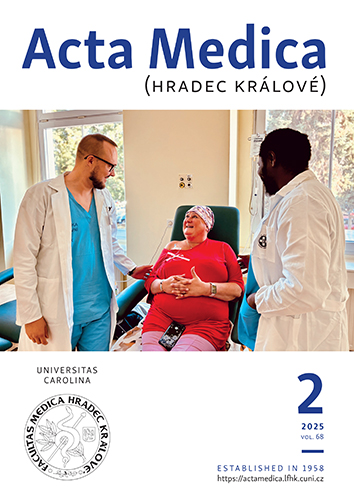ACTA MEDICA, Vol 65 No 4 (2022), 149–152
Successful Pregnancy Outcome after Amnioreduction Treated Acute Polyhydramnios Caused by Duodenal Atresia
Edin Medjedovic, Zlatan Zvizdic, Anis Cerovac, Sabaheta Jonuzovic-Prosic, Emir Milisic
DOI: https://doi.org/10.14712/18059694.2023.6
published online: 16. 03. 2023
abstract
The aim of our manuscript is to report of a successful perinatal outcome after treatment of acute polyhydramnios caused by duodenal atresia. A 34-year-old G3P1 was referred due to polyhydramnios in the 30th week of pregnancy. Ultrasound revealed polyhydramnios, amniotic fluid index (AFI) 28, and a double bubble sign that indicated duodenal atresia and dilatated oesophagus. In the 32nd week of gestation, the volume of amniotic fluid increases, AFI 35, along with symptoms of dyspnea and abdominal pain. Due to the clinical picture and the early gestational age, it was decided to perform an amnioreduction. In the 36th week of gestation cesarean section was performed. The baby was taken for exploratory laparotomy and found to have a simultaneous complete duodenal atresia and annular pancreas with associated dilated the first portion of the duodenum and the stomach. A side-to-side duodenoduodenostomy via single-layer hand-sewn anastomosis was performed over a transanastamotic feeding tube (TAFT). The postoperative course was uneventful. Amnioreduction is useful and safe in the treatment of acute polyhydramnios caused by duodenal atresia and thus has a significant role in prolonging gestation until fetal maturity.
keywords: polyhydramnios; pediatric surgery; invasive ultrasound; antenatal care

Successful Pregnancy Outcome after Amnioreduction Treated Acute Polyhydramnios Caused by Duodenal Atresia is licensed under a Creative Commons Attribution 4.0 International License.
210 x 297 mm
periodicity: 4 x per year
print price: 150 czk
ISSN: 1211-4286
E-ISSN: 1805-9694
